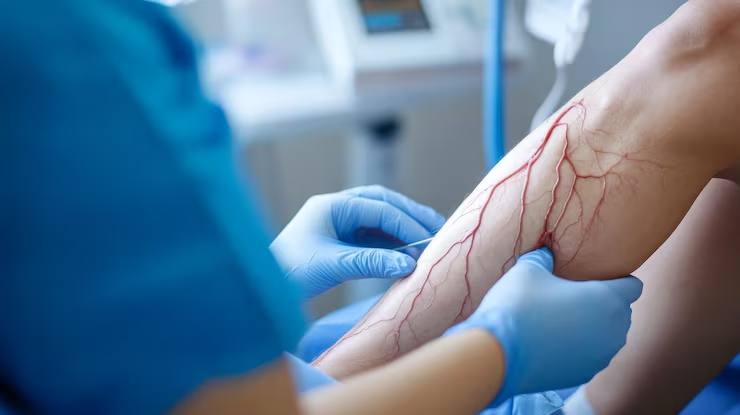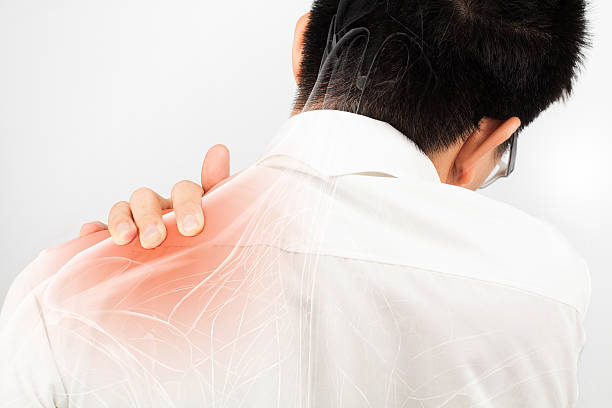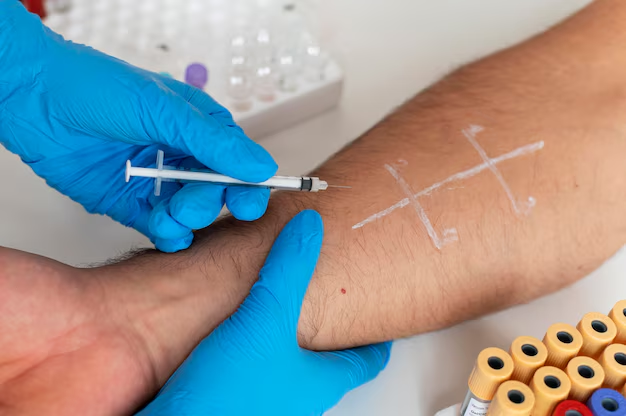Why This Comparison Matters
Ever noticed thin, web-like veins spreading across your legs or thick, twisted veins bulging out? It’s more common than you might imagine, and you’re not alone. Understanding the distinction between spider and varicose veins is more than just vanity—it’s about your confidence, comfort, and overall health. If you’re considering vein treatment in East Stroudsburg, knowing the difference can help you make informed decisions about the care you need.
Who Should Be Concerned?
If you spend hours on your feet, have a family history of vein disease, or just want to wear shorts without hesitation, this article is for you.
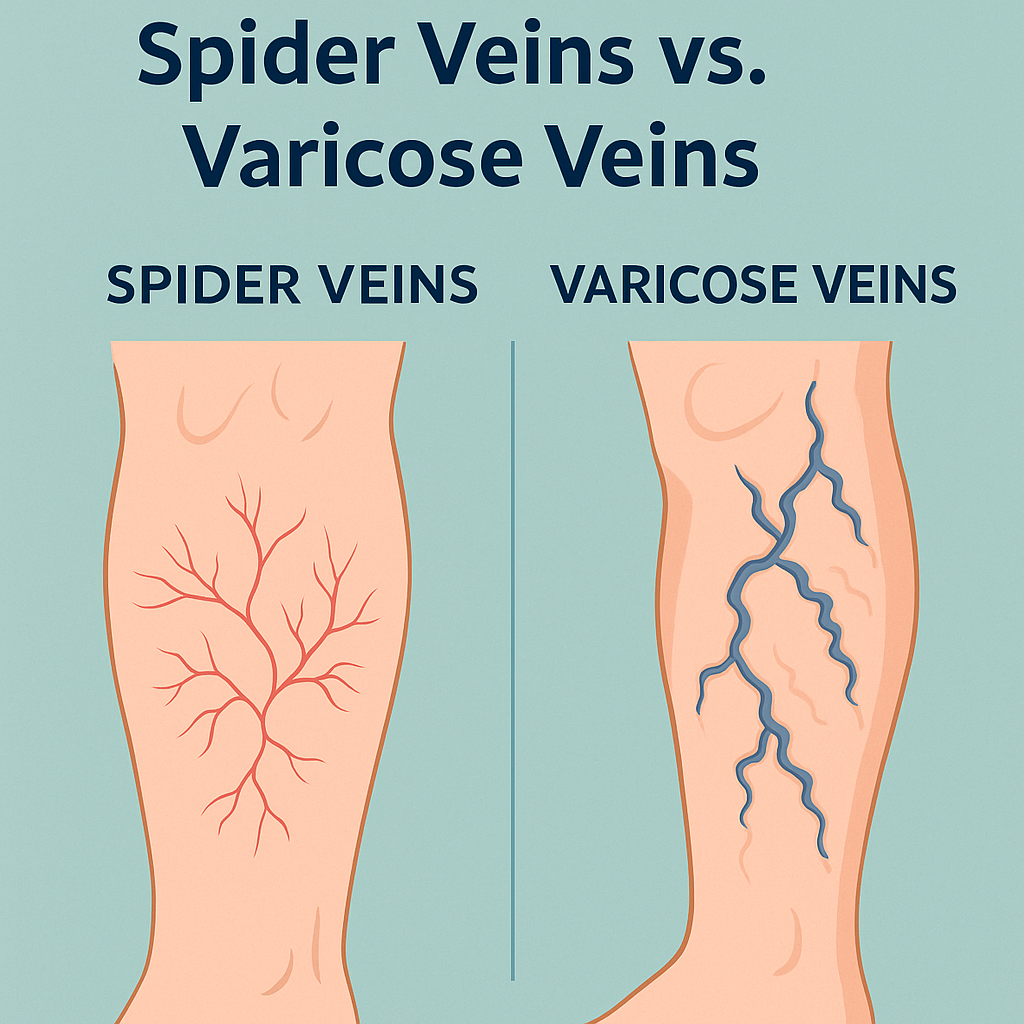
Understanding Veins and Blood Flow
How Veins Function in the Body
Veins carry deoxygenated blood back to your heart. In particular, they act against gravity in your legs. That’s a tough job!
The Role of Valves in Veins
Small valves in veins open and close to keep blood flowing properly. When these valves weaken or fail, blood can pool—leading to spider or varicose veins.
What Are Spider Veins?
Characteristics of Spider Veins
Tiny, thin veins that show up near the skin’s surface are known as spider veins. They’re usually red, blue, or purple and look like spider webs—hence the name.
Common Causes
- Hormonal changes
- Sun exposure
- Pregnancy
- Standing or sitting for long periods
Risk Factors
- Genetics
- Age
- Obesity
- Occupations that require prolonged standing
What Are Varicose Veins?
Key Features of Varicose Veins
Varicose veins are larger, raised, and often twisted or bulging. TUsually seen on the legs and feet, they might have a dark purple or blue appearance.
Underlying Causes
- Faulty vein valves
- Weakened vein walls
- Prolonged pressure in the legs
Risk Factors and Triggers
- Aging
- Hormonal shifts
- Excess weight
- Pregnancy
- Sedentary lifestyle
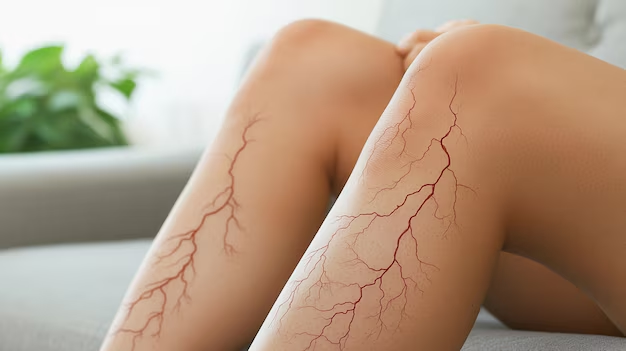
Spider Veins vs. Varicose Veins: The Key Differences
Appearance
- Spider Veins: Thin, flat, and thread-like
- Varicose Veins: Bulging, twisted, and rope-like
Symptoms
- Spider veins: Usually painless
- Varicose veins: Aching, heaviness, cramping, swelling
Health Impact
- Spider veins: Mainly cosmetic
- Varicose veins: May result in blood clots, ulceration, and persistent discomfort.
Treatment Approaches
Varicose veins could require more extensive treatments, but spider veins usually require less invasive ones.
When to See a Vein Specialist
Warning Signs You Shouldn’t Ignore
- Swelling in the legs
- Pain after long periods of standing
- Skin discoloration
- Visible, bulging veins
Importance of Early Consultation
Catching vein issues early can prevent complications and improve treatment outcomes.
Diagnosis and Evaluation
What to Expect During Your Visit
After examining your veins, a vein specialist will inquire about your symptoms and medical history.
Non-Invasive Diagnostic Tools
- Duplex ultrasound
- Venography
- Photoplethysmography
Spider Vein Treatment Options
Sclerotherapy
A saline solution is injected into the veins to collapse and fade them. Quick and effective for most patients.
Laser Therapy
Laser light targets and destroys smaller spider veins without needles.
Lifestyle Adjustments
- Elevate legs
- Wear compression stockings
- Exercise regularly
Varicose Vein Treatment Options
Endovenous Laser Therapy (EVLT)
In Easton and Stroudsburg, EVLT is an excellent substitute for laser light when it comes to caulking troublesome veins.
Radiofrequency Ablation
Similar to EVLT but uses radio waves. Great for larger varicose veins.
Vein Stripping and Ambulatory Phlebectomy
For severe cases, surgical removal of veins may be recommended.
Compression Therapy
Wearing compression stockings helps improve blood flow and reduce symptoms.
Choosing the Right Vein Specialist
Why Location Matters: Vein Specialist in Stroudsburg & Easton
Living in or near Stroudsburg or Easton? You’re in luck. Both towns boast top-rated vein clinics specializing in the latest treatments. Local care means easier follow-ups and better outcomes.
Qualifications to Look For
- Board certification
- Experience in vascular care
- Positive patient reviews
Recovery and Aftercare
What to Expect After Treatment
Most patients return to normal activity within a few days. Mild bruising or discomfort may occur.
Tips for a Smooth Recovery
- Stay active
- Avoid hot baths
- Wear compression stockings as advised
Preventing Spider and Varicose Veins
Healthy Lifestyle Tips
- Maintain a healthy weight
- Walk daily
- Eat a fiber-rich diet
Habits to Avoid
- Sitting with legs crossed
- High heels for long durations
- Standing still for extended periods
Myths About Spider and Varicose Veins
Common Misconceptions Debunked
- Myth: Only women get them
Truth: Men do too—just less likely to seek treatment. - Myth: Surgery is the only option
Truth: Many non-surgical treatments are now available. - Myth: It’s purely cosmetic
Truth: Untreated varicose veins can lead to serious health issues.
Conclusion
Spider veins and varicose veins may look different, but both signal that your circulatory system needs attention. Whether it’s a cosmetic bother or a painful burden, seeking expert care from a vein specialist in Stroudsburg or Easton can make a world of difference. Don’t ignore the signs—your legs deserve the best!
FAQs
Are spider veins just cosmetic?
Mostly yes, but they can indicate underlying vein issues in some cases.
Can varicose veins lead to serious complications?
Yes, including ulcers, blood clots, and chronic pain if left untreated.
How long do treatments take?
Procedures typically take less than an hour, and there is little to no downtime.
Is laser treatment painful?
Not really. You might feel a mild tingling or snapping sensation, but it’s generally well-tolerated.
Does insurance cover vein treatments?
It depends. Treatments for medical issues are usually covered, while cosmetic procedures might not be. Check with your provider.


